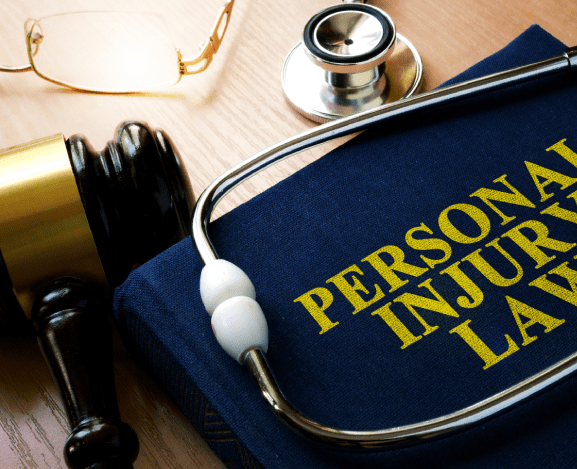Where pain management and personal injury meet
If you are in the unfortunate position of having suffered a personal injury of any kind, be it in a motor accident or a workplace incident, your first priority should be to get the medical treatment you need. The next step is to secure the help of a personal injury lawyer.
Your overall aim is to recover as fully as possible from the accident, physically, mentally, emotionally and financially. Together, medical treatment and the right legal advice will help you get there. However, sometimes, medical treatment can go wrong and become a medical malpractice or medical negligence case. Practitioners can make mistakes or act negligently, resulting in further pain and damages. If that is the case, your lawyer should be there to help you, not only to get compensation in respect of the accident itself but to also fight on your behalf against the practitioners and institutions in question.
Even in situations where your consultation with a medical professional is not the result of an accident but rather some other cause, such as a serious illness, the attempts to gain relief from your pain may still go awry. For example, pain management practices may ironically become the cause of further pain and suffering…these are among the more unpleasant areas of personal injury law. The very people you have gone to for comfort and pain relief during your infirmity end up prolonging, perhaps worsening your suffering. An experienced personal injury lawyer can help to ensure that they face the consequences, and that you get the compensation you deserve.

How do you know you have a case for malpractice? An unfavourable outcome is not enough to qualify your case. Remember sometimes good procedures and treatment can still yield unfavourable results as there is no guarantee in medicine. For you to legitimately seek to sue your medical practitioner and secure the aid of a lawyer, there are specific administrative steps to be taken which may include the following conditions:
Violation of the standard of care
The law understands that the medical profession has specific standards that are recognized as acceptable under specific circumstances. This is referred to as the standard of care. Every patient has a right to expect their medical care to be carried out at least in accordance with that standard. If there is proof that this standard has not been met, legal action is justified.
An injury or pain and suffering caused by the act of negligence
It is not enough that the standard of care has been violated. For a malpractice claim to be valid, there must be evidence that the act(s) of negligence resulted in an injury or pain and suffering.
Significant damages resulting from the negligence
Since malpractice suits are so expensive, the damages claimed must considerable. These cases involve a lot of deposition time and testimonies from a range of medical experts. If the value of the damages does not exceed the costs involved with going through this lengthy and costly process, there is no case.
If you consult a lawyer and they determine that you have all three of these in place, as long as a ‘like-kind’ physician is willing to state in writing that the other medical provider’s conduct ‘fell below the community standards of care’ resulting in your injuries, then you may have a good chance of pursuing a successful malpractice suit. Let us consider some of the specific circumstances that might lead to a medical malpractice legal action.
When conservative medical treatment is no longer effective
Conservative treatment of pain and illness involves practices such as chiropractic, and physical therapy in the case of muscular or spinal injuries. In other cases, it may involve mild pain medication. It should be the first option chosen by a medical practitioner. If it does not work, then the practitioner will probably escalate to gradually more aggressive and drastic approaches. The more aggressive the treatment, the more likely it is that something could go wrong. Typically, the most conservative avenues of recovery are considered first.

Drugs for pain management
The use of drugs is the most usual approach for pain management. It is intended to be temporary and used in conjunction with other methods intended to bring about the permanent healing of an injury or illness. Some of the drugs used include epidural steroid injections (ESI), facet block injections, trigger point injections, and pills of varying strengths. The incredible array of pain killers on the market come with a host of possible side effects, which a medical practitioner must consider while considering the patient’s medical history and sensitivities.
Other pain management treatments: radiotherapy and rhizotomy
Aside from physical manipulation and the prescription of drugs, doctors may use radiotherapy and rhizotomy to treat injuries and pain. Radiotherapy is often used for the treatment of cancer and involves the use of ionizing radiation to attack malignant cells. It can also be used for palliative purposes, i.e., to ease pain. If radiation therapy is carried out incorrectly, however, it can result in painful burns. Overdoses of radiation can even be deadly. Patients can also develop sensitivities to radiation that result in unwelcome side effects. These are not caused by malpractice, however, and it would need to be established whether a patient’s symptoms are a result of negligence or naturally occurring side effects. The decisions of the course of treatment should always be done by a licensed and vetted medical professional.
The increased use of radiation in the diagnosis and treatment of illness
Radiation is an extremely effective tool for both diagnosis and treatment. The use of x-rays has been a crucial part of medical diagnostics for a long time. Using radiation for treatment purposes is a somewhat newer development. Improving technology is making the use of radiation more and more common in both areas. Radiation is known to lead to cancer being cured in many patients and effectively alleviates symptoms and prolongs survival in more extreme cancer cases. Overall, it has proven to be extremely successful as a treatment. However, the increased reliance on this treatment means that, statistically, there will be more cases of negligence and malpractice. Patients who undergo radiotherapy should trust that practitioners are doing their best and that this excellent treatment will be effective, but they should also be aware of the possibility that errors, and damages could occur.
Injuries caused by radiation over-exposure
If a patient is over-radiated, they can develop severe burns on the skin and tissues surrounding the treatment site. Over-exposure can even lead to future cancer development. Massive overdoses of radiation can be lethal. Over-exposure can happen due to one of several possible errors, including incorrect placement of external devices, surgical mistakes in the placement of internal devices, shielding errors, poorly designed treatment plans, overdosing, underdosing, over-reliance on the record and verify system.
Can you sue for radiation damage?
If you believe that your medical care team made mistakes that led to you developing radiation damage, and another like-kind physician believes it was due from it and would be willing to testify to that, you may have good cause to launch a medical malpractice suit. In line with the general guidelines for medical malpractice, you must be able to prove that the standard of care was violated, that this violation clearly led to your pain, damages, or worsened medical condition, and that the damages are substantial enough to justify protracted legal proceedings. It is possible to find proof and to successfully sue for radiation damages, provided you have the aid of a lawyer with a thorough understanding of radiation treatments and the backing of expert testimony.

What amounts can be claimed for radiation overexposure malpractice?
The exact monetary value of a malpractice claim depends on various factors and would have to be determined based on each case’s details. In a 2017 study of radiation malpractice cases of the preceding ten years, it was found that, of the 362 malpractice cases filed against radiation oncologists between 2003 and 2012, 102 were paid, amounting to a total of $38 million. The largest portion of these were found to be attributable to ‘improper performance,’ and paid out a total of $11 million. Any individual case, depending on its merits, could result in a much larger or much lower pay-out. It is all in the evidence.
Is a rhizotomy the same as a radiofrequency ablation?
Radiofrequency ablation and rhizotomy are basically two terms for the same/similar procedure. It is a non-surgical, minimally invasive technique that uses heat to reduce pain. Radiofrequency waves are used to ablate or burn the nerve ends causing the pain, which stops the pain signals from being transmitted to the brain.

Is a rhizotomy considered surgery?
Rhizotomy is a minimally invasive surgical procedure. It is not as invasive as to say a procedure involving the removing of tissues from the body or cutting the body open, although the rhizotomy usually involves insertion of needles. Although rhizotomy does involve a small incision, no tissues are removed. Hence it is minimally invasive surgery. The incision is microscopic and is made to create an opening for a catheter. The radio frequencies are then transmitted through this catheter, making direct contact with the affected nerve or blood vessel, which then shrinks under the resulting heat.
How a misdiagnosis can result in neurosurgical malpractice/medical negligence suit
Neurosurgical malpractice can result from a misdiagnosis or a surgical error. When a surgeon or other medical practitioner either fails to perform the proper diagnostic tests or misinterprets the results of such tests, a misdiagnosis will result. The surgeon will then proceed with a particular treatment based on that misdiagnosis. Since the patient’s condition was misdiagnosed, the treatment chosen by the practitioner will not cure the patient’s condition and may, in fact, make it worse. If a misdiagnosis causes further damages, then the patient has grounds for a medical malpractice suit.
Medical malpractice can be very hard and expensive to prove. You need the help of a personal injury lawyer with experience in this specific field. Sokoloff & Weinstein, P.A. provides legal services with a level of personal attention that makes clients feel comfortable and informed while dealing directly with a personal injury lawyer. We devote a great deal of our practice to personal injury and wrongful death claims in Florida. If you believe you have sufficient cause to pursue a medical malpractice lawsuit, contact us and book a free consultation with one of our personal injury lawyers.
